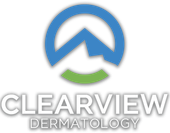Sunscreen by Activity: Which SPF Works Best for Hiking, Gardening, or Swimming?
Key Points:
- Different outdoor activities demand specific sunscreen types and SPF levels.
- Water-resistant formulas are essential for swimming and high-sweat activities.
- Mineral sunscreens often perform better during extended outdoor adventures.
- Reapplying every two hours is critical, regardless of SPF level.
- Colorado’s high elevation means UV rays are significantly stronger.
Why Your Activity Matters for Sun Protection
Not all sunscreens perform the same in every situation. Hiking, gardening, and swimming each place different demands on your skin and sunscreen. Sweat, water, soil, and altitude all affect how well your sunscreen protects you.
Living in Colorado adds another challenge: at 5,000 feet, UV exposure is about 25% stronger than at sea level. If you’re heading into the mountains, that number climbs even higher. Matching your sunscreen to your activity is the best way to prevent burns and long-term skin damage.
Hiking: Reliable Protection on the Trail
SPF Levels That Work
For hiking, SPF 30 is the minimum. For longer outings or high-altitude trails, SPF 50 offers added protection. Reflected sunlight from rocks, water, or snow makes a higher SPF especially important.
Why Mineral Sunscreens Excel Outdoors
Zinc oxide and titanium dioxide block UV rays the moment they’re applied. They are less likely to sting your eyes when you sweat and are gentler during long hours of sun exposure. Many newer mineral sunscreens now minimize the white cast that older formulas left behind.
What to Look For
Choose sport or active formulas that resist sweat. Stick formats make it easier to reapply without mess. Don’t forget often-overlooked areas like the tops of your ears and the back of your neck.
Gardening: Protection That Holds Up
Choosing the Right SPF
For short gardening sessions, SPF 30 usually suffices. If you’ll be in direct sun for longer periods—or frequently bending forward where the back of your neck is exposed—SPF 50 is safer.
The Challenge of Dirty Hands
Because gardening involves frequent hand washing and contact with soil, water-resistant sunscreens are best. Keep a tube with your tools for quick reapplication.
Areas Most at Risk
The backs of the hands, forearms, and chest area near the neckline are frequent trouble spots for sun damage in gardeners. Apply sunscreen generously to these areas.
Swimming: Water Resistance Is Essential
The SPF Standard
SPF 30 or higher is a must for swimming. Be sure to choose a water-resistant formula—ideally labeled for 80 minutes rather than 40.
Chemical vs. Mineral Formulas
Chemical sunscreens often perform better in water because they absorb quickly and feel less heavy. For sensitive skin, mineral formulas can still work, but they may require more frequent reapplication.
The Reapplication Rule
Always reapply after drying off, even if your sunscreen is labeled water resistant. Toweling removes more sunscreen than most people realize.
Sport Sunscreens: A Flexible Option
For those who combine activities—like hiking in the morning and swimming in the afternoon—sport sunscreens are an excellent choice. They are typically sweat- and water-resistant, come in higher SPF levels, and provide consistent coverage across multiple settings.
Making Reapplication a Habit
Reapplication every two hours is non-negotiable, regardless of SPF level. To make it easier:
- Set a phone reminder every two hours.
- Keep travel-size sunscreens in your bag, garden shed, or pool tote.
- Reapply during natural breaks such as rest stops, water breaks, or after towel-drying.
Quick Tips by Activity
- Hiking: Add extra to your nose, ears, and shoulders at rest stops.
- Gardening: Reapply after hand washing or heavy sweating.
- Swimming: Reapply after each swim session or towel-off.
Common Mistakes to Avoid
- Using too little sunscreen: A shot-glass sized amount covers the whole body; use a nickel-sized amount for the face.
- Skipping small areas: Don’t forget the tops of feet, ears, eyelids, lips, and scalp/hairline.
- Relying on makeup SPF: Makeup alone is insufficient for outdoor activities; use a dedicated sunscreen.
Colorado’s Extra UV Challenge
Every 1,000 feet of elevation adds about 4% more UV exposure. A hike at 8,000 feet exposes you to roughly 32% more UV radiation than sea level. Add in reflective surfaces like snow and water, and the risk increases dramatically.
If you notice new sunspots, changes in moles, or other concerning skin changes, a
skin cancer screening can provide peace of mind and early detection.
Frequently Asked Questions
Is SPF 30 really that different from SPF 50?
Yes. SPF 30 blocks about 97% of UV rays, while SPF 50 blocks about 98%. That 1% can make a difference over hours of exposure.
Can I use one sunscreen for everything?
A sport SPF 50 formula works in most situations, but you may prefer lighter options for gardening or daily wear.
Do I need to wait before going outside?
Chemical sunscreens need about 20 minutes to absorb. Mineral sunscreens protect immediately.
What about cloudy days?
Up to 80% of UV rays penetrate clouds, so sunscreen is still necessary.
About Clearview Dermatology
Our dermatologists specialize in helping Coloradans protect and care for their skin in high-altitude conditions. Along with sunscreen guidance, we provide screenings, medical dermatology, and cosmetic treatments for sun damage.
Our Locations:
- Candelas (Arvada):
720-797-9184 |
14789 W. 87th Parkway, Arvada, CO 80005
- Bergen Park (Evergreen):
720-694-8550 |
32135 Castle Court, Ste 202 Evergreen, CO 80439
- Dakota Ridge (Littleton): 720-909-8154 | 13402 W Coal Mine Ave, Ste 360 Littleton, CO 80127
The Bottom Line
The best sunscreen is the one matched to your activity. Whether you’re climbing a mountain, tending your garden, or swimming on a hot afternoon, choosing the right SPF and reapplying regularly makes all the difference.
At Clearview Dermatology, we help outdoor enthusiasts balance their love of Colorado’s sunshine with long-term skin health.
Disclaimer: The information provided on this blog is for general informational purposes only and is not intended as, and should not be considered, medical advice. All information, content, and material available on this blog are for general informational purposes only. Readers are advised to consult with a qualified healthcare professional for medical advice, diagnosis, or treatment. The author and the blog disclaim any liability for the decisions you make based on the information provided. Always seek the advice of your physician or other qualified health provider with any questions you may have regarding a medical condition.





